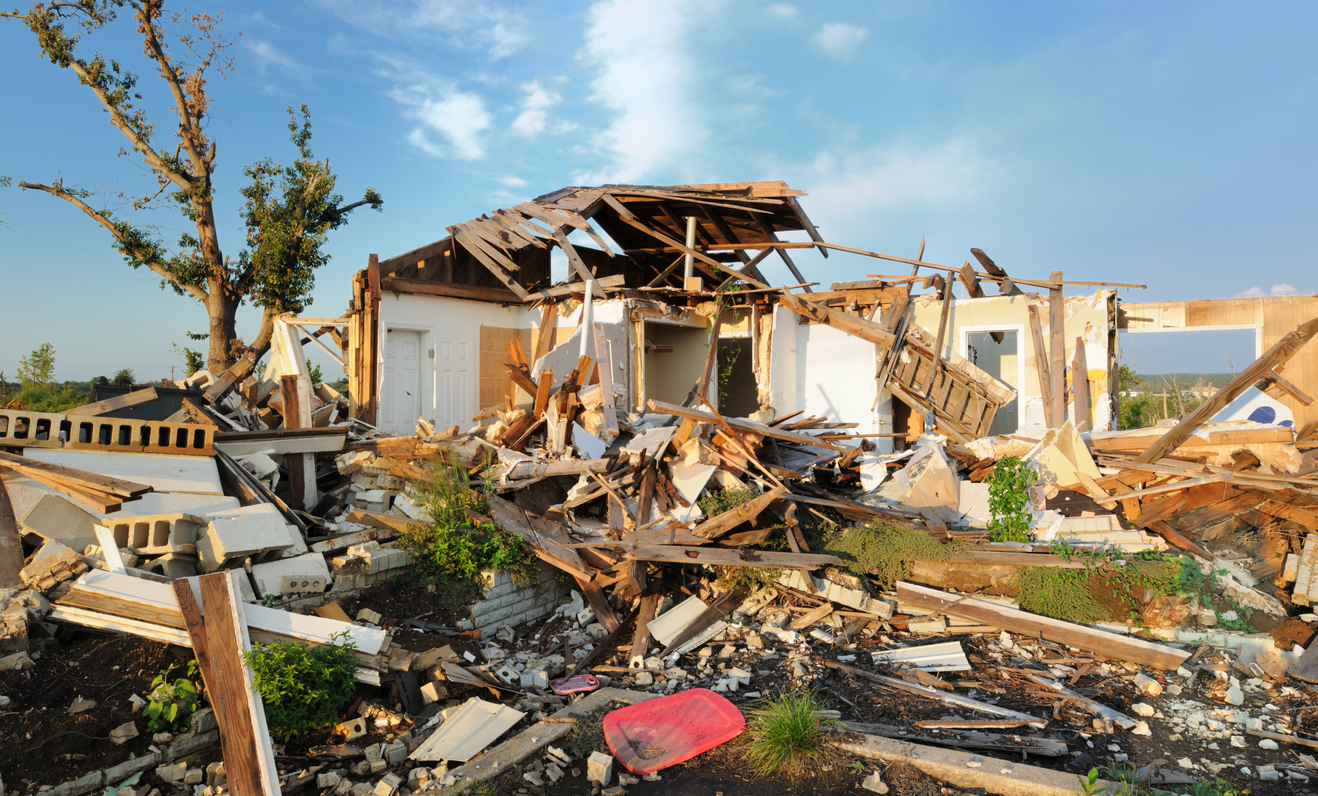That figure would make the storms that tore through six states last week one of the most costly tornado disasters in history. Damage is so widespread that some insurers are using aerial imagery to identify where claims will come from.
”Some parts of town are still standing, but for the most part it is just total devastation,” said Steve Jones, an agent for Shelter Mutual Insurance Co. in Mayfield, Ky., one of the hardest-hit locations.
His office is still intact but lacks electricity and internet connection, so a phone message directs policyholders to a “mobile catastrophe team” set up by the Missouri-based carrier in a fast-food restaurant parking lot.
Tornado damage is covered under most standard auto- and home-insurance policies, according to insurance regulators, executives, brokers and consumer activists. That compares to flooding which is typically excluded.
Some insurers in recent years have increased use of special deductibles for damage from windstorms, including tornadoes, to hold down their potential payouts, according to trade groups and regulators. The deductible is the amount a policyholder pays to cover losses before the insurer pays on a claim.
Deductibles for homeowners’ policies are often $500-$1,000, but special deductibles can equal 1% or 2% of the coverage amount. For a policy covering a $300,000 home, that could mean a $6,000 payout before the insurance kicks in. Consumer advocates say these special deductibles can be confusing and prohibitively expensive for homeowners.
Tornado deductibles in the six states affected generally are far smaller than those paid by coastal homeowners for hurricane coverage. Some carriers that cover homes in the affected area offer optional windstorm deductibles in exchange for lower annual premiums. State Farm Mutual Automobile Insurance Co., a major insurer in the region, said it doesn’t use a separate windstorm deductible in the six states.
Estimates of damage from the storms have risen in recent days. Fitch Ratings said that collective insured losses could be several billion dollars, possibly rising to $5 billion. That is a fraction of the cost of two other major storms this year. Winter Storm Uri in February had an insured cost of $15 billion and Hurricane Ida in August and September was about $40 billion, Fitch said.
Most U.S. tornadoes occur between April and June, according to the National Oceanic and Atmospheric Administration. They form from large thunderstorms as warm, humid air rises. Tornadoes aren’t common in December, but the unusually warm weather last week produced the conditions necessary for the storms.
According to trade group Insurance Information Institute, based on Aon PLC data, the costliest U.S. catastrophe involving tornadoes occurred in April 2011, when a spate of twisters hit Tuscaloosa, Ala., and other areas, causing $8.5 billion in insured losses in 2020 dollars.
As of Thursday afternoon, State Farm had received more than 11,000 claims from the six states. Kentucky was the hardest hit with about 1,800 claims, and Tennessee is just behind, a spokesman said. The carrier had about 1,400 auto-insurance damage claims.
USAA said it had received nearly 2,000 claims by early Thursday. It is using aircraft to identify large losses and get settlements underway, a spokeswoman said.
Some agents said they are taking initiative to file claims for policyholders, to get a jump on the assignment of an adjuster and payment of temporary living expenses. Kentucky Farm Bureau agency manager Mike Cartwright said he has filed claims from his own mobile phone while driving around Mayfield, and he has looked on Facebook at photos posted by clients.
“I knew I had them insured, so I turned in the claim to get the process started,” he said.
Robert Hunter, the Consumer Federation of America’s insurance director, said policyholders could find their coverage insufficient because of inflation.
The tornadoes hit as building materials, furniture and labor prices already have been surging, with inflation that has worsened in recent months.
Across the six states “there is enough damage to create ‘demand surge’ in the cost of rebuilding,” Mr. Hunter said. A home properly insured for a fire at $100,000 might cost well over that as entire tornado-hit communities seek to rebuild simultaneously.
Besides tornado damage to homes, U.S. property insurers also face many business claims. As well, comprehensive auto coverage covers tornado-related wind damage to a vehicle.













